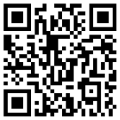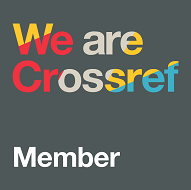Mobile Learning Media for Enhanced Motivation in Audio and Video Processing: A Vocational Multimedia Approach
Abstract
Full Text:
PDFReferences
R. C. Pianta, “Teacher-Student Interactions: Measurement, Impacts, Improvement, and Policy,” Policy Insights from Behav. Brain Sci., vol. 3, no. 1, pp. 98–105, Dec. 2015, doi: 10.1177/-23727-322-15-62-24-57.
C. Broom, “Empowering students: Pedagogy that benefits educators and learners,” Citizenship, Soc. Econ. Educ., vol. 14, no. 2, pp. 79–86, Aug. 2015, doi: 10.1177/2047173415597142.
N. S. K. Pang, “Teachers’ Reflective Practices in Implementing Assessment for Learning Skills in Classroom Teaching,” ECNU Rev. Educ., vol. 5, no. 3, pp. 470–490, Sep. 2022, doi: 10.1177/20-965-31120936290/ASSET/IMAGES/LARGE/10.1177_2096531120936290-FIG1.JPEG.
T. Muir, I. Wang, A. Trimble, C. Mainsbridge, and T. Douglas, “Using Interactive Online Pedagogical Approaches to Promote Student Engagement,” Educ. Sci., vol. 12, no. 6, p. 415, Jun. 2022, doi: 10.3390/educsci12060415.
J. Lv, “Improving college student engagement and motivation in a gamified learning environment: the pilot study in China,” Curr. Psychol., vol. 43, no. 8, pp. 6986–6994, Feb. 2024, doi: 10.1007/s12144-023-04884-8.
R. E. Mayer, “Incorporating motivation into multimedia learning,” Learn. Instr., vol. 29, pp. 171–173, Feb. 2014, doi: 10.1016-/j.learninstruc.2013.04.003.
A. Haleem, M. Javaid, M. A. Qadri, and R. Suman, “Understanding the role of digital technologies in education: A review,” Sustain. Oper. Comput., vol. 3, pp. 275–285, Jan. 2022, doi: 10.101-6/j.-susoc.2022.05.004.
M. D. Abdulrahaman et al., “Multimedia tools in the teaching and learning processes: A systematic review,” Heliyon, vol. 6, no. 11. Elsevier, p. e05312, Nov. 01, 2020. doi: 10.1016/-j.heliyon.-2020.-e05312.
Mazidah, M. Erna, and L. Anwar, “Developing an Interactive Chemistry E-Module for Salt Hydrolysis Material to Face the Covid-19 Pandemic,” in Journal of Physics: Conference Series, IOP Publishing, Oct. 2020, p. 012051. doi: 10.1088/1742-6596/-1655/-1/012051.
K. Bause, A. Radimersky, M. Iwanicki, and A. Albers, “Feasibility studies in the product development process,” in Procedia CIRP, Elsevier, Jan. 2014, pp. 473–478. doi: 10.1016/j.procir.2014.03.128.
K. L. Yeung, S. K. Carpenter, and D. Corral, “A Comprehensive Review of Educational Technology on Objective Learning Outcomes in Academic Contexts,” Educational Psychology Review, vol. 33, no. 4. Springer, pp. 1583–1630, Dec. 01, 2021. doi: 10.1007/s10648-020-09592-4.
M. Cents-Boonstra, A. Lichtwarck-Aschoff, E. Denessen, N. Aelterman, and L. Haerens, “Fostering student engagement with motivating teaching: an observation study of teacher and student behaviors,” Res. Pap. Educ., vol. 36, no. 6, pp. 754–779, Nov. 2021, doi: 10.1080/02671522.2020.1767184.
M. Bouckaert, “Current Perspectives on Teachers as Materials Developers: Why, What, and How?,” RELC J., vol. 50, no. 3, pp. 439–456, Dec. 2019, doi: 10.1177/0033688218810549.
A. Krulatz and M. Christison, “Developing and Using Teaching Materials,” in Multilingual Approach to Diversity in Education (MADE), Palgrave Macmillan, Cham, 2023, pp. 79–104. doi: 10.1007/978-3-031-17335-6_4.
L. Flórez-Aristizábal, S. Cano, C. A. Collazos, F. Benavides, F. Moreira, and H. M. Fardoun, “Digital transformation to support literacy teaching to deaf Children: From storytelling to digital interactive storytelling,” Telemat. Informatics, vol. 38, pp. 87–99, May 2019, doi: 10.1016/j.tele.2018.09.002.
S. Simões, T. Oliveira, and C. Nunes, “Influence of computers in students’ academic achievement,” Heliyon, vol. 8, no. 3, p. e09004, Mar. 2022, doi: 10.1016/j.heliyon.2022.e09004.
DOI: http://dx.doi.org/10.17977/um010v7i12024p01-06
Refbacks
- There are currently no refbacks.
 | Letters in Information Technology Education (LITE) |

1.png)
1.png)
4.png)
1.png)
.png)
.png)

3.png)
1.png)
1.png)

3.jpg)